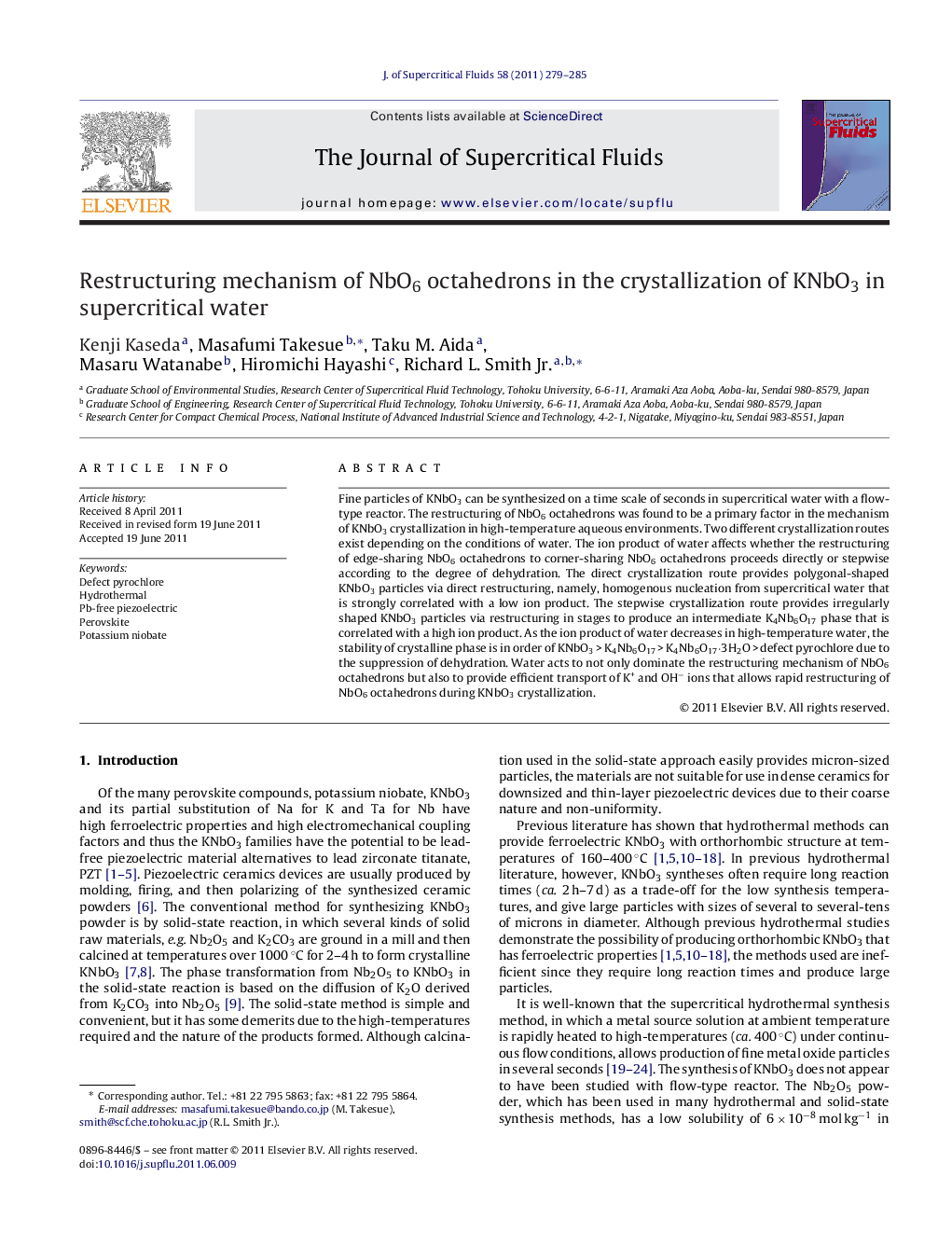| Article ID | Journal | Published Year | Pages | File Type |
|---|---|---|---|---|
| 231176 | The Journal of Supercritical Fluids | 2011 | 7 Pages |
Fine particles of KNbO3 can be synthesized on a time scale of seconds in supercritical water with a flow-type reactor. The restructuring of NbO6 octahedrons was found to be a primary factor in the mechanism of KNbO3 crystallization in high-temperature aqueous environments. Two different crystallization routes exist depending on the conditions of water. The ion product of water affects whether the restructuring of edge-sharing NbO6 octahedrons to corner-sharing NbO6 octahedrons proceeds directly or stepwise according to the degree of dehydration. The direct crystallization route provides polygonal-shaped KNbO3 particles via direct restructuring, namely, homogenous nucleation from supercritical water that is strongly correlated with a low ion product. The stepwise crystallization route provides irregularly shaped KNbO3 particles via restructuring in stages to produce an intermediate K4Nb6O17 phase that is correlated with a high ion product. As the ion product of water decreases in high-temperature water, the stability of crystalline phase is in order of KNbO3 > K4Nb6O17 > K4Nb6O17·3H2O > defect pyrochlore due to the suppression of dehydration. Water acts to not only dominate the restructuring mechanism of NbO6 octahedrons but also to provide efficient transport of K+ and OH− ions that allows rapid restructuring of NbO6 octahedrons during KNbO3 crystallization.
Graphical abstractFigure optionsDownload full-size imageDownload as PowerPoint slideHighlights• Two routes for crystallizing KNbO3 fine particles from supercritical water are demonstrated. • Selectivity of the crystallization routes corresponds to the restructuring of edge-sharing NbO6 octahedron. • Selectivity of the crystallization route can be controlled by varying the conditions of water.
